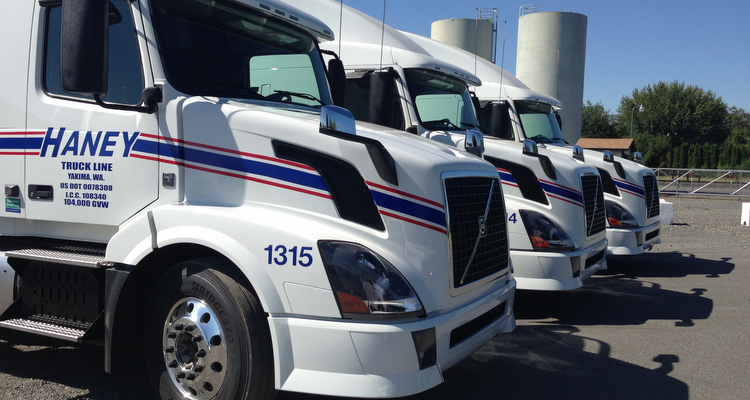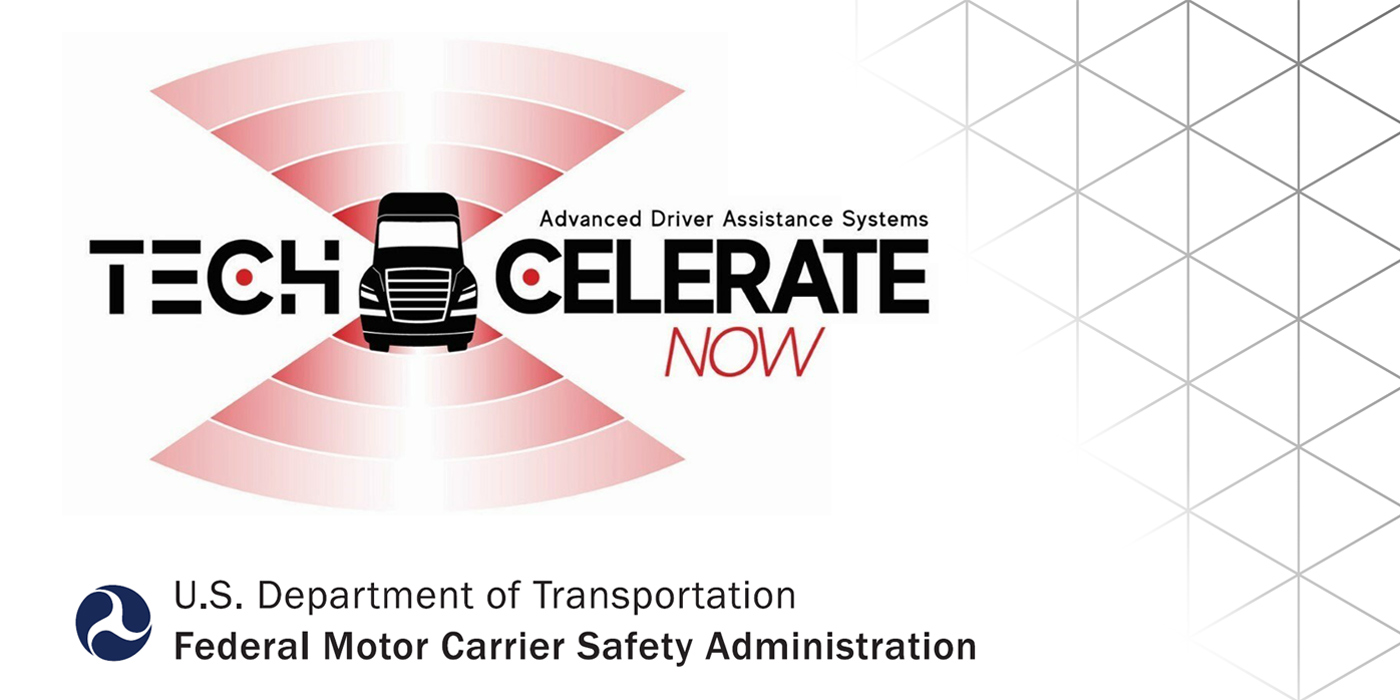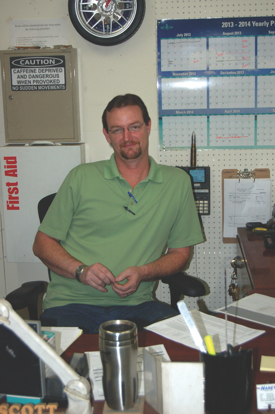
Five years ago, handwritten information on the maintenance of the Haney Truck Line fleet was the norm, says Scott Kessinger, service and parts manager. “Today,” he states, “maintenance management software is enabling us to more effectively manage 450 tractors and 1,500 trailers in three shops.”
Headquartered in Yakima, Wash., Haney Truck Line is one of the largest truckload carriers in the western United States, serving customers in 11 states and the Canadian provinces of Alberta and British Columbia. The diversified transportation services provider offers dedicated, single source, common and contract carriage, logistics, on-site management and related truckload services, including heavy hauls of as much as 105,500 lbs. GCW. Primary markets the carrier serves include paper, glass, aluminum, beverage, container and recycling industries.
“With the economic downturn, we opted to keep some of our equipment longer than usual,” Kessinger says. “Normally, we replace tractors every five to six years. While we’re working to get back on that trade cycle, we didn’t purchase any new units from 2008 through 2011, and we added just 30 new vehicles in 2012 and 15 this year. That means we still have some 2003 model year tractors in the fleet, which makes staying on top of scheduled maintenance more critical.”
The Haney fleet is maintained by 37 technicians working in a six-bay, full service facility in Yakima, a two-bay shop in Olympia, Wash., and a three-bay location in Portland, Ore. Linking the locations and providing Kessinger with centralized management capabilities is Dossier Fleet Maintenance Software from Arsenault Associates.
“The Dossier program automates administration of the fleet’s maintenance operation in several ways, especially parts and warranty management,” Kessinger relates. “We buy parts locally for each facility from area OEM vendors and centrally through major aftermarket parts houses such as FleetPride and Anderson Brothers. Regardless of the source or the maintenance facility, with Dossier we can control our inventory and remove obsolete items, determine usage, monitor pricing changes and automatically trigger parts orders based on pre-determined stock levels so we always have what we need on hand.
“Warranty on every part and every vehicle is also something we track with the Dossier software,” Kessinger continues. “The software lets us customize warranty for systems or groups of vehicles. For example, we have 12 different warranties set up on our newest Volvos for basic items, engines, cooling systems and others based on what’s covered and the timeframe of the warranty.”
That information is also fed into a shop floor system at Haney facilities. If a component is covered, Kessinger explains, the technician is automatically notified to save the failed part.
Automation
“Our technicians are all set up in the system and are required to log into each repair order so they can look at warranty coverage, preventive maintenance that is due and any work pending based on driver write-ups,” Kessinger relates. “Everything is automated and in real time, so the same up to date information is available in every shop in our network.
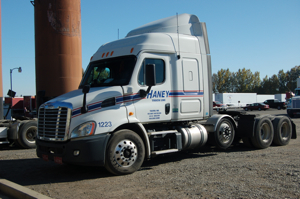
“Dossier is driven by VMRS codes,” Kessinger continues. “That lets us customize any of the more than 150 pre-configured reports in the system to evaluate costs for different makes, model years, systems and components on individual units and groups of vehicles.”
Kessinger goes on to list some of the ways that data can be used to positively impact the cost of operating the Haney Truck Line fleet. Included is the ability to reduce rework, increase warranty recovery, improve technician and shop productivity, identify high cost units and benchmark costs. He adds that the data has value in making more effective equipment replacement decisions based on cost and performance comparisons.
“In the end,” Kessinger says, “it all adds up to reduced downtime and lower costs, as well as the ability to extend equipment service life without sacrificing the quality of customer service.”
Meeting challenges
Haney’s 450 Volvo and Freightliner tractors include many four-axle models fitted with lift axles to handle heavy loads. Dry van trailers are primarily high cube Wabash National DuraPlate units. “One of our challenges,” Kessinger says, “is spec’ing to meet the different weight and bridge laws in the various states and provinces in which we operate.
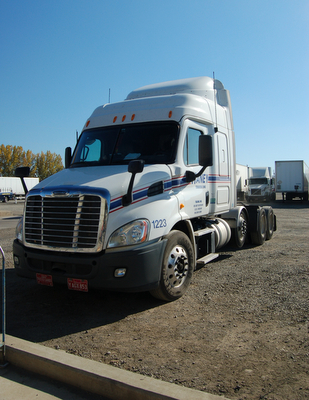
“We’re also very focused on fuel efficiency,” Kessinger continues. “Over the years, we’ve changed our specs from 3.90 rear axle ratios that put our average RPM at 1,600 RPM at the posted speed limit to ratios as low as 2.64 on our newest trucks. That brings the engine RPM down at highway speed, which boosts fuel economy. Along with advances in vehicle aerodynamics, low rolling resistance tires, the addition of tire pressure monitoring, Auxiliary Power Units and other systems and components designed to maximize MPG, the lower gear ratio in a new Volvo in our operation contributes to a 6/10 to 8/10 MPG improvement compared to a similar 2008 model.”
Haney Truck Line operates one of the largest fleets of four-axle tractors, and heavy haul trailers in the Pacific Northwest. Included are 64-ft. van sets, 64-ft. flatbed sets and four-axle 53-ft. vans capable of carrying up to 63,000 lbs. of freight. To support the services its provide, the company employs satellite tracking and communications systems, TMW Systems fleet management software, document imaging, Electronic Data Interchange (EDI) and other forms of electronic data communication.
“We create efficiency for our customers by maximizing load sizes and offering customized solutions for their transportation needs,” Kessinger says. “Our focus is on the development of long term relationships and our success is a result of superior customer service, sound financial management, and the ability to provide our customers with the most efficient, timely and reliable transportation system available.”
PM down at highway speed, which boosts fuel economy. Along with advances in vehicle aerodynamics, low rolling resistance tires, the addition of tire pressure monitoring, Auxiliary Power Units and other systems and components designed to maximize MPG, the lower gear ratio in a new Volvo in our operation contributes to a 6/10 to 8/10 MPG improvement compared to a similar 2008 model.”

